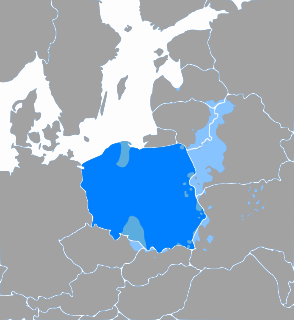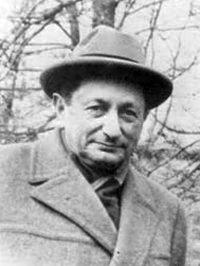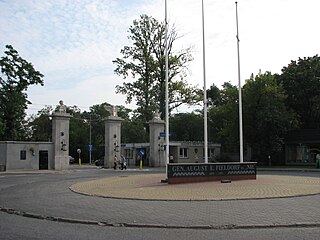This article does not cite any sources .(December 2009) (Learn how and when to remove this template message) |
The Askenazy school (Polish: Szkoła Askenazego, sometimes referred to as Lwów–Warsaw School of History, Lwowsko-warszawska szkoła historyczna) was an informal group of Polish historians formed in the early 20th century under the influence of Szymon Askenazy in the University of Lwow and Warsaw University.

Polish is a West Slavic language of the Lechitic group. It is spoken primarily in Poland and serves as the native language of the Poles. In addition to being an official language of Poland, it is also used by Polish minorities in other countries. There are over 50 million Polish language speakers around the world and it is one of the official languages of the European Union.

Szymon Askenazy was a Jewish-Polish historian, educator, statesman and diplomat, founder of the Askenazy school.

The University of Lviv, presently the Ivan Franko National University of Lviv is the oldest university foundation in Ukraine, dating from 1661 when the Polish King, John II Casimir, granted it its first royal charter. Over the centuries it underwent transformations, suspensions and name changes that reflected the geo-political complexities of this part of Europe. The present institution can be dated to 1940. It is located in the historic city of Lviv in Lviv Oblast of Western Ukraine.
In the 19th century, most history studies in Poland were focused mainly on the Middle Ages and the Renaissance. The dominant trend among most conservative historians was to argue that the modern history of Poland was nothing but a history of ill-fated uprisings; the history was thus ignored in their studies.

Poland, officially the Republic of Poland, is a country located in Central Europe. It is divided into 16 administrative subdivisions, covering an area of 312,696 square kilometres (120,733 sq mi), and has a largely temperate seasonal climate. With a population of approximately 38.5 million people, Poland is the sixth most populous member state of the European Union. Poland's capital and largest metropolis is Warsaw. Other major cities include Kraków, Łódź, Wrocław, Poznań, Gdańsk, and Szczecin.

In the history of Europe, the Middle Ages lasted from the 5th to the 15th century. It began with the fall of the Western Roman Empire and merged into the Renaissance and the Age of Discovery. The Middle Ages is the middle period of the three traditional divisions of Western history: classical antiquity, the medieval period, and the modern period. The medieval period is itself subdivided into the Early, High, and Late Middle Ages.

The Renaissance is a period in European history, covering the span between the 14th and 17th centuries and marking the transition from the Middle Ages to modernity. The traditional view focuses more on the early modern aspects of the Renaissance and argues that it was a break from the past, but many historians today focus more on its medieval aspects and argue that it was an extension of the middle ages.
The Askenazy school was the first to underline the importance of recent history in the creation of the modern nation in Poland. It also focused on the history of international diplomatic relations and economic development of Poland.
A nation is a stable community of people, formed on the basis of a common language, territory, history, ethnicity, or psychological make-up manifested in a common culture. A nation is distinct from a people, and is more abstract, and more overtly political, than an ethnic group. It is a cultural-political community that has become conscious of its autonomy, unity, and particular interests.
The historians grouped in this movement were the first to lay foundations for the modern study of the history of the Duchy of Warsaw and Congress Poland.

The Duchy of Warsaw was a Polish state established by Napoleon I in 1807 from the Polish lands ceded by the Kingdom of Prussia under the terms of the Treaties of Tilsit. The duchy was held in personal union by one of Napoleon's allies, King Frederick Augustus I of Saxony. Following Napoleon's failed invasion of Russia, the duchy was occupied by Prussian and Russian troops until 1815, when it was formally partitioned between the two countries at the Congress of Vienna. It covered the central and eastern part of present Poland and minor parts of present Lithuania and Belarus.

The Kingdom of Poland, informally known as Congress Poland or Russian Poland, was created in 1815 by the Congress of Vienna as a sovereign state of the Russian partition of Poland. Connected until 1832 by personal union with the Russian Empire under the Constitution of the Kingdom of Poland, it was gradually thereafter integrated politically into Russia over the course of the 19th century, made an official part of the Russian Empire in 1867, and finally replaced during World War I by the Central Powers in 1915 with the nominal Regency Kingdom of Poland.












